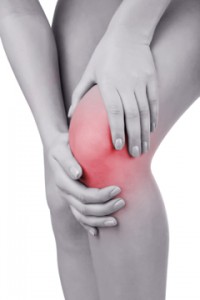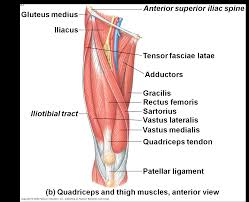The condition commonly referred to as ‘runner’s knee’ may also be known as patellofemoral pain syndrome (PFPS). PFPS is one of the most common knee problems among runners and cyclists. PFPS presents as vague pain and stiffness around the knee, which can sometimes be narrowed down to the inside or outside areas of the kneecap or patella. Typically, PFPS is a dull pain, however, particular movements may create sharp twinges. Characteristically, going up and down stairs, and sitting still for prolonged periods of time are aggravating factors for this condition.
of the most common knee problems among runners and cyclists. PFPS presents as vague pain and stiffness around the knee, which can sometimes be narrowed down to the inside or outside areas of the kneecap or patella. Typically, PFPS is a dull pain, however, particular movements may create sharp twinges. Characteristically, going up and down stairs, and sitting still for prolonged periods of time are aggravating factors for this condition.
So, what causes PFPS? Essentially, PFPS is a tracking issue of your patella. As you flex yourknee, your patella should sink nicely into a groove on your femur (your thigh bone) and track along this groove throughout the movement. In the case of PFPS, something is affecting the tracking of your patella and pulling it out of its groove on the femur, this creates increased pressure on the underside of the patella as it rubs against the femur. Additionally, when the patella is pulled out to the side in such a way, it creates a stretch on the joint capsule and synovium of the knee, which when irritated produces fluid. The collection of this fluid in the knee joint is what creates a feeling of fullness and stiffness after prolonged sitting – this is called ‘movie goers sign’ and can be remedied with 1-2 minutes of easy walking.
Ok, so what is pulling your patella out of its happy groove on your femur? There are a few potential answers to this question. The first is your vastus medialis. The vastus medialis is one of the 4 muscles that make up your quadriceps. Vastus medialis is the quadricep muscle located toward the inside of your thigh. When this muscle isn’t pulling as hard as the other 3 in the quadriceps group the patella gets pulled toward the outside of the knee and tracks improperly as mentioned above.
![32-weak gluteus medius[5]](https://runwaterloo.com/wp-content/uploads/2014/06/32-weak-gluteus-medius5-263x300.jpg)
The second reason that your patella may be tracking improperly is a little more complicated and involves the dreaded iliotibial band (ITB). The ITB is a thick fibrous band of fascia that starts up around the hip and inserts down around the knee. The ITB has connections into our glutes and to our patella, and when these mechanics are off we get knee pain. The gluteus medius and minimus muscles, when functioning properly, prevent our hip from bowing out. This action is particularly important when we’re running, because we are weight bearing on one leg at a time, and putting approximately 3-5x our body weight through our joints. Therefore, our gluteus medius and minimus are working over time to keep our hips from bowing out. When these muscles fatigue, and the hip eventually bows outward, it puts a strain on the ITB, which runs down the outside of our legs. The ITB has a small connection into the outside of the patella via a lateral retinculum. As the hip repeatedly bows outward, and the ITB becomes tighter, its connection into the outside of the patella also becomes tighter and it pulls the patella toward the outside of the knee and out of its groove on the femur.
There is a very simple way to prevent PFPS and keep your knees healthy. Cross training! It is incredibly important to keep variety in your workouts. The reason that PFPS is so common among runners and cyclists is because those activities predominantly involve forward motions with very little side-to-side motions. It is imperative that we give our running muscles a break and train the others to maintain strength and endurance. When it comes to PFPS prevention is key. PFPS does not reverse itself easily and requires diligent treatment and rehabilitation to fully heal.
@simmogl @RunWaterloo Can also xtrain by training glutes for strength & endurance – yoga, clam shells, airplanes, bridges, monster walk!
— Dr. Julia Callaghan (@DrJuliaC) June 12, 2014
 Dr. Julia Callaghan, Chiropractor,
Dr. Julia Callaghan, Chiropractor,
ART®, CSCS, Acupuncture
References:
Pajaczkowski, J. (2011). The Knee: Biomechanics, Pathology, and Diagnosis. Lecture Notes.



1 Comment
Comments are closed.